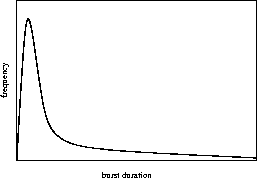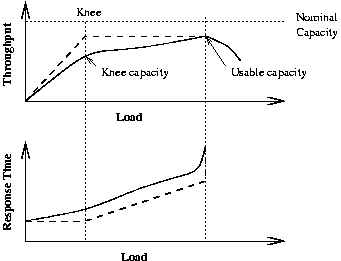Lecture 3 - CPU Scheduling
- Announcements
- Process Creation from Lecture 2
- CPU Scheduling
- Project 1 - Discrete Event Simulation
CPU scheduling can be done at three different levels:
- Long-term Scheduling - also known as batch scheduling.
Decide which jobs/processes are allowed into the system.
- Short-term Scheduling - or interactive scheduling.
Decide from a collection of ready processes which gets the CPU next.
- Medium-term Scheduling - or memory scheduling. Decide
if/when a process should be "swapped out" or back in based on memory
available.
We will discuss primarily short-term scheduling here, though we will
discuss all of the algorithms that Tanenbaum splits between batch and
interactive scheduling.
A typical process alternates between the need for CPU and the need for
I/O service throughout its lifespan. This is called the CPU-I/O
burst cycle.
It is this fact that makes multiprogramming essential. When a process
needs I/O, it's good to have another process ready to move in and take
advantage of the available CPU resource.
The amount of time that it can make use of the CPU is known as its
CPU burst time.
A typical distribution of CPU burst times looks like this:
Processes may be categorized as:
The type of processes in the system will affect the performance of
scheduling algorithms.
A short-term CPU scheduling decision is needed when a process:
- switches from a running to a waiting state (non-preemptive)
- switches from a running to a ready state (preemptive)
- switches from a waiting to a ready state (preemptive)
- terminates (non-preemptive)
Goals of a CPU scheduler. (In parens is whether this is a goal of the
owners of the system or the users of the system)
Response Time's Relationship to Throughput
First-Come, First-Served (FCFS) Scheduling
As its name suggests, the first process to arrive gets to go first.
It is a non-preemptive FIFO system.
Example:
Consider 4 processes P1, P2, and P3 that have burst times of
24, 3, and 3, respectively.
If the processes arrive in the order P1, P2, P3, FCFS will
service them in that order. We visualize this with a Gantt
Chart:
|---------P1----------|-P2-|-P3-|
0 24 27 30
Waiting times: P1 = 0; P2 = 24; P3 = 27, Avg:
(0+24+27)/(3)=17.
But what if the processes arrive P2, P3, P1?
|-P2-|-P3-|---------P1-----------|
0 3 6 30
Waiting times: P1 = 6; P2 = 0; P3 = 3, Avg:
(6+0+3)/(3)=3.
FCFS characteristics:
Remainder moved to Lecture 4 notes.


